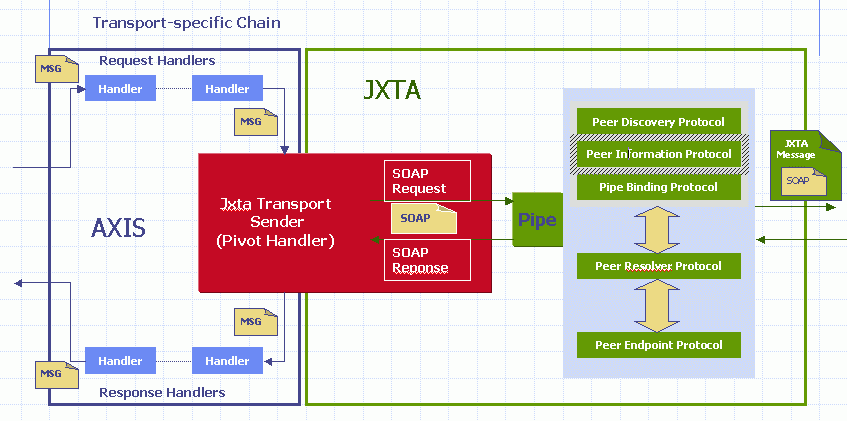|
|
JXTA & Web Services Gateway |
|||||||||||
|
Writing JXTA Transport on AxisIntroductionAxis is essentially a SOAP engine -- a framework for constructing SOAP processors such as clients, servers, gateways, Axis is a great framework for Web Services with agility, it is easy to make Axis be able to send SOAP message over JXTA protocol by simply plug JXTA Transport Sender/Listener into Axis and peers in JXTA can talk in SOAP. JXTA Transport SenderThe figure below explains the sequence of a JXTA peer (client) sending SOAP message to a remote peer (server), we provide the same programming mechanism as in Axis, the client stubs are generated by using JSDL2Java which takes a JSDL (JXTA Service Description Language) file as input and generates client stubs and server skeleton. The JSDL2Java is much like WSDL2Java that Axis provides for the same purpose. The client stubs serialize the Java object into SOAP message and start the Axis Engine and its internal message flow, the Axis Engine is aware of using the JXTA Transport Sender to sent the SOAP message in JXTA protocol to remote JXTA peer.
The JXTA Transport Sender uses JXTA Pipe to send SOAP message to remote JXTA peer (service).
¡@ JXTA Transport ListenerAxis provides servlet-based and socket-based receivers for JXTA services to receive SOAP/HTTP requests from the network. In JXTA, we use JXTA Bidirectional Pipe to implement the JXTA Transport Listener for peers to listen to any request from other peers. We also provide JSDL2Java which takes a JSDL (JXTA Service Description Language) file as input and generates server skeleton for services development and deployment.
¡@ ¡@ |


